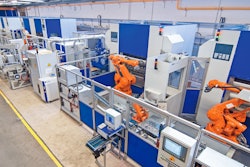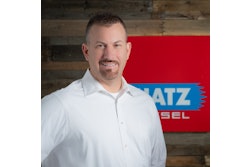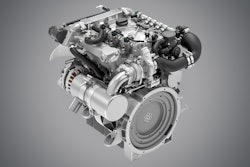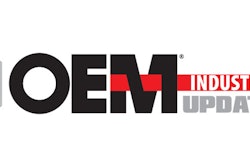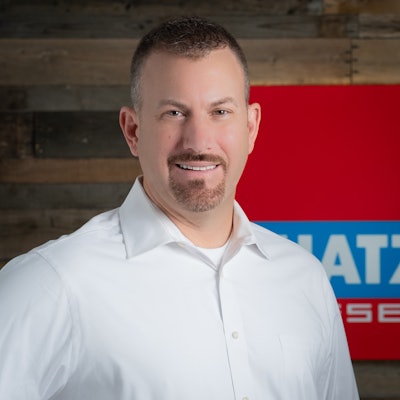
Each year, our State of the Industry issue looks at the top trends and technologies within the heavy equipment industries. We also dig into current and future market conditions, as well as regulations which may currently or in the coming years have an impact on how the industry will go about designing its equipment.
To get the best insights, we speak with executives from a variety of companies working in the industry—everyone from associations, to OEMs to component suppliers. Below are responses provided by Mike Hartoonian, President & CEO Hatz Diesel of North America, Inc., Dr. Maren Hellwig, Head of Digital Business Development, Motorenfabrik Hatz GmbH & Co. KG, and Dr. Sebastian Wohlgemuth, Director R&D, Motorenfabrik Hatz GmbH & Co.
Read all of this year's executive Q&As.
Global Markets, Government & Trade
Are there any policies you are keeping your eye on that could impact (or have already impacted) your company and the industry?
Hartoonian: Certainly, short term any additional widespread lockdowns of populations and on economic activity would have negative impacts on both the supply and demand sides of the equation. Transitioning to a longer-term view, while remaining optimistic of a “post-covid bounce” and the potential of real infrastructure spending, I do feel, and we are seeing the result of, massive amounts of government spending in the form of inflation, as well as continued supply and labor issues. Clearly these issues, particularly inflation, has the potential to further slow the current recovery.
Diesel, Electric & Other Power Alternatives
How, if at all, do you see the role of diesel engines evolving in the coming years?
Wohlgemuth: Engines will remain important for applications with high power demand/wide operation range, but only with synthetic fuel (decarbonization); equipment with low power demand and limited operation range won’t be driven by a diesel engine in the future, however, engines will contribute to the power supply of heavy-duty equipment.
Hartoonian: Furthermore, I would say confidently that IC (internal combustion) engines in general and diesel engines specifically, have many years of service ahead of them, particularly in commercial equipment applications. Of course, there will be innovation and as we see throughout history, left to its own inspirations business can be the driver of amazingly creative innovations.
Engine manufacturers will continue to develop new and more efficient designs, but beyond that I think the relationship with equipment manufacturers to realize additional efficiencies and downsize engine size seems to make sense, as does the use of alternative fuels.
I do expect that that there will be an increase market share of fully electric equipment. However, I further expect that the largest increase in market share, especially with commercial equipment, we will see will be in hybrids.
What alternative fuels do you foresee entering the heavy equipment industry in the next 5 to 10 years?
Wohlgemuth:
- Short term: HVO (Hydrotreated Vegetable Oil)
- Middle term: OME (oligomeric oxymethylene dimethyl ethers)/synthetic diesel (heavily depending on cost efficient and energy efficient production)
- Long term: H2 (hydrogen; still open questions concerning cost efficient and energy efficient production and storage/infrastructure); storage and handling could be solved by using LOHC (liquid organic hydrogen carriers) or e.g. NH3 (ammonia), due to system complexity; interesting for applications with low requirements concerning packaging.
 Dr. Sebastian Wohlgemuth
Dr. Sebastian Wohlgemuth
How will electrification—or other alternative energy/power systems—continue to advance in the heavy equipment industry?
Wohlgemuth: Electrification and other alternative power systems will have a massive impact on the heavy equipment industry. There will be a diversity of technologies in future; future equipment will have the power system/energy system which is best suited for the particular use case.
What new emissions regulations do you see on the horizon, and how might they impact future product development?
Wohlgemuth: More strict emission regulations around 2023…2026 (depending on region U.S. [CARB, EPA)]EU and power class). Engines of the lower power classes will get more expensive due to the regulations which will lead to a smaller gap between expensive new technologies (getting cheaper due to future development and scale effects) and diesel engines getting more expensive due to exhaust gas aftertreatment requirements.
Very strict emission regulations could lead to a change in technology not only caused by increasing costs but also by emission limits impossible to reach.
Data, IoT & Connectivity
What will be the best use cases for the Internet of Things (IoT) and data in the coming years?
Hellwig: In the coming years, four types of use cases will benefit from the possibilities of connectivity. First, those that are installed in hard-to-reach regions. Second, those that can create additional value for customers through automation. Third, those that simplify or optimize customer business processes through additional information. Finally, those who want to plan and carry out their maintenance in a usage-based, predictive, and optimal manner.
What potential do you see in the use of artificial intelligence (AI) and augmented/virtual reality (AR/VR)—both for the design and manufacture of products as well as within equipment?
Hellwig: AI will support manufacturers to develop optimized smart (predictive/prescriptive) maintenance. Augmented content will support technical trainings. In combination with connectivity (via phone and/or with additional machine and sensor data) remote help in maintenance and repair situations is possible. Technical personnel on site, which do not have enough knowledge to solve critical situations on their own can be optimally supported from anywhere in the world.
What advancements do you see on the horizon for connectivity and machine learning in the next decade?
Hellwig: Connectivity data in combination with machine learning algorithms will greatly support manufacturers to understand customer needs on a completely different level. The additional information we receive about the usage behavior of the engines enables us to offer our future drive solutions in an optimized and customized manner.
The development of AI-based algorithms which use machine and sensor data to predict future failures and corresponding action recommendation will be a very challenging but rewarding advancement. Future service offers and business models will benefit enormously from the additional information.  Dr. Maren Hellwig
Dr. Maren Hellwig
What challenges remain for the continued adoption of data, IoT and connectivity related technologies or systems?
Hellwig: Challenges which remain are the selection of relevant data types as well as the currently still small available database. In order to create valid conclusions from combined data, a sufficiently large statistic is required.






